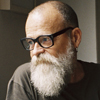UNION FORUM FALL 2010
Art & Social Justice
James Chapel, Union Theological Seminary
Broadway at 121st Street
New York, NY
In a world where art is increasingly judged by market value, and where MFA programs promote gallery representation more than vocational calling, this series of lectures by visual artists investigates social justice as a driving motivation. Exploring the social, philosophical and spiritual traditions that offer resources for artists to imagine justice and new visions of human flourishing, these lectures draw on the creative tension of their setting in a historic theological seminary, suggesting a new commonality between art and religion in the shared pursuit of social justice.
 Guerrilla Girls
Guerrilla Girls
Wednesday, September 22, 2010
Guerrilla Girls is an anonymous group of radical feminist artists established in New York City in 1985. Known for their posters, books, billboards, appearances and other creative forms of culture jamming, the group aims to expose discrimination and corruption…. Guerrilla Girls want to reclaim the “F word" (feminism). They want people to embrace the tenets of feminism, which include equal opportunity, the end of gender-based discrimination, equal access to education, freedom from sexual exploitation and abuse, reproductive rights education, and human rights for women everywhere. They are famous for wearing gorilla masks in public and taking the names of deceased female artists as pseudonyms.
--Wikipedia
Their very anonymity makes clear that they are fighting for women as a caste, but their message celebrates each woman's uniqueness. By insisting on a world as if women mattered, and also the joy of getting there, the Guerrilla Girls pass the ultimate test: they make us both laugh and fight; both happy and strong.
–Gloria Steinem
 AA Bronson
AA Bronson
Wednesday, October 6, 2010
Godfather to queer artists everywhere, AA Bronson has made all varieties of artworks during his decades-long practice, focusing on a poetic obsession with the profundity of birth, friendship, love, death, and attempts at self-knowledge.
--Flavorpill
AA Bronson will speak on his history as an artist, healer, and activist over the last 45 years. From 1987 through 1994 he produced more than 70 temporary public artworks on the subject of AIDS as part of the artists’ group General Idea: currently their AIDS wallpaper is installed at the Museum of Modern Art. In the last decade, he has turned his focus to the subject of loss and mourning, and then to trauma, and especially group trauma. Most recently, his subject is healing, queer community, and queer history. When he first came to Union as a student three years ago, he found a school immersed in a history of social justice work, with no idea of, or connection to, the social justice work being done in the visual art world—and vice versa. Together with Kathryn Reklis, he founded the Institute of Art, Religion, and Social Justice as a means to create a conversation between those two communities through the lens of social justice. He will address all these topics and more in an illustrated talk followed by open discussion.
 Gregg Bordowitz
Gregg Bordowitz
Wednesday, November 10, 2010
Gregg Bordowitz is an artist, writer, and Professor of Film, Video, and New Media at the School of the Art Institute, Chicago. He is the author of The AIDS Crisis Is Ridiculous and Other Writings, 1986-2003 (MIT Press, 2004). His opera The History of Sexuality Volume One by Michel Foucault: An Opera adopts the dramatic musical form to stage the major themes and insights of one of the most influential philosophers of the late twentieth century. The performance is set against a backdrop drawn from Foucault´s biographical details, including his activism on behalf of prisoners´ rights, and his death from AIDS. About this lecture, Brodowitz says: "Recently, I have been thinking about the ways that religion does and does not structure my work. I've been trying to parse how faith, belief, and affect concern my efforts. Strange now that I would be writing poetry or directing an opera after years of activist filmmaking. In some ways nothing has changed. Other changes occur constantly."
 Paul Chan
Paul Chan
Wednesday, December 1, 2010
“Paul Chan’s peculiar blend of the literary and the political, the age-old and the cutting-edge, the religious and the erotic has been everywhere lately.”
--BOMB
In November 2007, Paul Chan collaborated with the Classical Theatre of Harlem and Creative Time to stage five free site-specific performances of Samuel Beckett's play Waiting for Godot in two New Orleans neighborhoods that had been destroyed by the flooding caused by the levee breaks during Hurricane Katrina. The performances were part of a larger project, which also included a fund to help local rebuilding and reorganization efforts, plus a series of dinners, lectures, classes, and events that unfolded throughout the city during the fall of 2007. Paul will discuss the organizing and aesthetic ideas around the project and show clips from the performance in the Lower Ninth Ward. He will also talk about the installation of the Godot archive at MoMA (now on exhibit until September 2011).
 Alfredo Jaar
Alfredo Jaar
Wednesday, December 8, 2010
Jaar’s work bears witness to military conflicts, political corruption, and imbalances of power between industrialized and developing nations… the holocaust in Rwanda, gold mining in Brazil, toxic pollution in Nigeria, and issues related to the border between Mexico and the United States.
-–Art21
Alfredo Jaar will discuss his recent projects.
The Institute of Art, Religion, and Social Justice was founded under the auspices of Union Theological Seminary to explore the relationship between contemporary art and religion through the lens
of social justice.